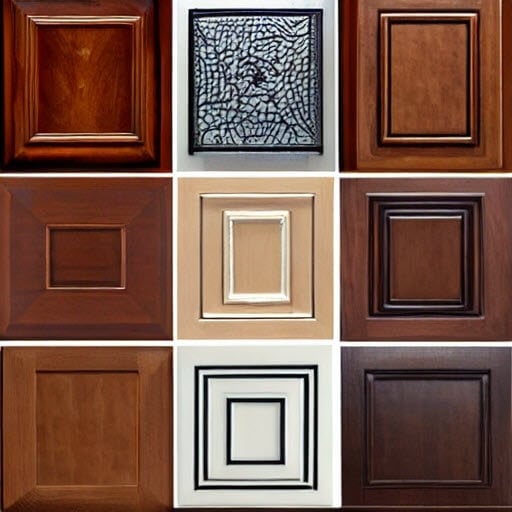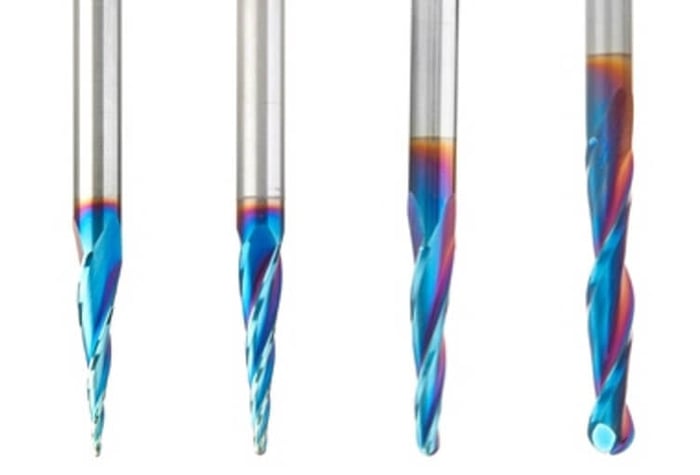
How to Choose the Right Router Bit for Your Cabinet Doors
The first thing you need to consider when choosing a router bit for your cabinet doors, is what style door you want.
Are you leaning towards a traditional raised panel design, a simple shaker style, or a more intricate profile? This will guide your router bit choice.
Cabinet Door Styles and Terminology
Cabinet Box: The cabinet iteself, without the door, is called the cabinet box. It is literally a box, designed to be mounted on a wall. It has two sides, almost always a back panel, a top, and a bottom, which is used as a shelf. (There are often additional shelves; these are not technically part of the box.)
Cabinet Frame: The edges of the box closest to you are called the frame. A frameless cabinet is just a 3-dimensional box. A cabinet with a face frame has an additional layer on the front of the box. Both styles can accomodate cabinet doors.
Drawers: Besides shelves, cabinets often include drawers. The drawer front will usually match the doors covering the interior shelves.

Stile & Rail Construction: This is when one or more flat panels are secured within a "frame" made of vertical stiles and horizontal rails, meeting at 90 degrees in the corners.
This is sometimes called cope and stick construction, as opposed to mitered construction where the horizontal and vertical pieces are joined at 45 degrees.
All panel doors are a little more complicated to manufacture than slab doors, but are less likely to warp or twist in humid conditions.
What is a Shaker Style Door?: The Shaker aesthetic is very plain and simple, with an efficient use of materials. 2 stiles, 2 rails, 1 flat panel, that's it.
Traditional Shaker doors will have stiles and rails from 2 1/4 to 3 1/2 inches thick, with a 1/4 inch step down to plain recessed panel. "Skinny Shaker" doors have a narrower frame, sometimes as little as 3/4 inches, and can have as little as 1/8 inch step down from frame to panel.
Skinny Shakers are considered more modern, but it can be a little trickier to find hardware that fits.
Mission style doors are very similar, but usually made from oak, with a darker stain. Shaker style doors are usually made from lighter color woods, or painted in a light color.
"Mock" Panel: Instead of actual stiles and rails, doors can be carved from a single slab/board to appear as if they have recessed or raised panels.
Watch How To Make MDF Cabinet Doors, with CNC Free Plans in full-screen. Get the free, customizable plans here. Or, purchase the AMS-262 4-Pc CNC Simulated MDF Shaker Cabinet Door Router Bit Set for both MDF and solid panels.
Slab Door: These have a flat door panel without any outer frame. You often see these in modern and contemporary kitchens and bathrooms. They are often faced with laminate.
Recessed Panel: This design features a flat center panel with a raised surrounding frame. It's versatile and can fit in both traditional and contemporary settings.
Watch Medicine Cabinet DIY Build in fullscreen.
Raised Panel: These doors have a center panel that's elevated compared to the surrounding frame, adding depth and dimension. They are often associated with traditional or classic designs. Router bits for raised panel doors often come in sets.
Beadboard: Featuring vertical slats, beadboard doors are ideal for achieving a cottage or country aesthetic.
Louvered: These doors have horizontal wooden slats, sort of like window shutters. They are often used for cabinets which require ventilation. Tambour doors are similar, but the slats are connected and roll up and down or side to side.
Glass-Front or Mullion Doors: These doors replace the center panel with glass, allowing for visibility into the cabinet. They can be used to display dishware or decorative items.
Arched or Cathedral Panel: When the center panel is not horizontal, but arched or curved, we call this an arched panel door. A high top arch is ofen called a cathedral arch. The arch can be both top and bottom, or only on the top. It is probably the most traditional style of door.
Full Overlay: This is when the door completely covers the cabinet frame, creating a smooth and very modern look.
Partial Overlay: This is when you can see part of the cabinet frame behind the door(s).
Inset Doors: Inset doors are level/flush with the cabinet frame.
Cabinet Door Edge: Doors can have sharp 90-degree edges, but a subtle roundover edge improves durability.
Cabinet Door Materials: Doors can be made from traditional solid wood, manufactured wood material such as MDF or plywood, or metal.
As you can see, by combining all these options, there is an endless variety of looks for your cabinet doors.
Now for the fun part:
Choosing the Right Router Bit
There are as many types of router bits as there are styles of cabinet doors. Use the links above to start your journey, or browse our full line of router bits for cabinet doors.





